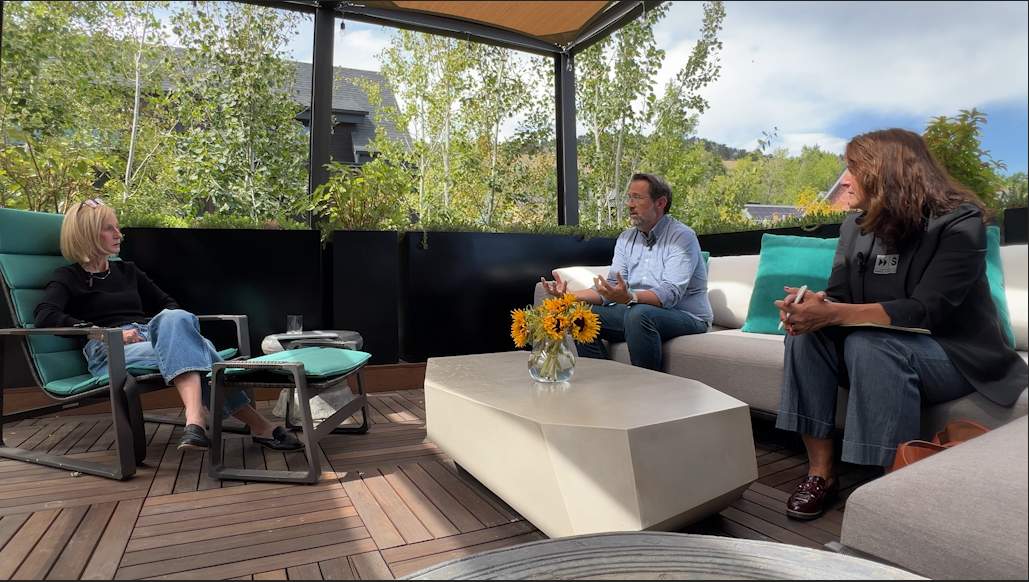A Conversation with Make Startups on Ecosystem Building

I recently sat down with Make Startups for a conversation on ecosystem building. We discussed collaboration, investment ecosystems, and how to break the inertia that keeps innovative ideas from becoming sustainable businesses. Below are the five key takeaways. You can read the original article here.
#1
Ecosystem Leadership Requires True Collaboration, Not Just Cooperation
One of the biggest insights Wendy shared is the distinction between cooperation and collaboration.
- Cooperation is transactional: “I give you something, you give me something.”
- Collaboration is unbounded, meaning it requires shared vision, trust, and a long-term commitment to mutual success.
Many aspiring ecosystem leaders struggle because they’re focused on what they need, rather than what the entire community needs. True collaboration requires a shift in mindset—from competition to collective success.
“This is why more folks aren’t good ecosystem leaders—they’re constantly thinking about what they need, and they’re not thinking about what you need.”
The best ecosystems don’t just encourage collaboration in theory—they bake it into the way resources, funding, and opportunities are shared.
#2
Bridging the Gap Between Research and Entrepreneurship is Critical
A recurring challenge Wendy highlighted is the disconnect between research-driven innovation and business-building.
- Not all scientists want to be entrepreneurs, which leaves groundbreaking research stuck in academia rather than reaching the market.
- Many research institutions struggle to find founders who can take intellectual property (IP) and build scalable businesses around it.
- The EDA Tech Hubs initiative is working to solve this by accelerating commercialization of deep-tech sectors like quantum computing, AI, and advanced materials.
To bridge the gap, ecosystems must create pathways that support both researchers and entrepreneurs, providing the right resources, capital, and talent to move innovations from the lab to the real world.
“The iteration speed for advanced technologies is really slow. That’s one of the opportunities for our ecosystem—to provide the infrastructure and resources that allow researchers to transition their discoveries into viable businesses faster.”
#3
Venture Capital is Not the Only Path to Funding
One of the most misleading myths in startup ecosystems is that venture capital (VC) is the only way to scale a business. The reality? Only 0.5% of U.S. businesses receive venture funding.
- Wendy advocates for a more holistic capital stack, incorporating CDFIs, government grants, state funding, and non-dilutive capital to support founders.
- Many tech entrepreneurs aren’t aware that they can secure funding from community lenders and state-backed programs.
- Optimizing for profitability is often a better long-term strategy than chasing VC money too early.
“You don’t just think, ‘Where are the angels? Where’s the VC?’ There are lots of different ways to get there—including optimizing for profitability.”
The future of startup funding will require more inclusive capital solutions that support both small businesses and high-growth startups.
#4
The Role of Government in Startup Growth is Expanding
Government funding and economic development efforts are playing an increasingly important role in entrepreneurship ecosystems.
- The EDA Tech Hubs initiative is a major shift in federal investment—supporting local innovation clusters across the U.S. with real capital.
- State and local governments are actively creating new funding pathways—from grants to workforce development programs.
- Programs like SBIR/STTR grants (which help startups commercialize government-funded research) are critical but underutilized by founders.
Wendy believes that founders and investors need to pay more attention to these government-driven funding sources. They are reshaping ecosystems and creating opportunities beyond just the coasts.
“The federal government and state matching it has decided we need a lot more of this type of business that solves big, hairy problems—like national security, climate change, and economic mobility.”
The key for entrepreneurs? Learn how to navigate these funding streams.
#5
People and Relationships Matter More Than Capital
At the core of Wendy’s message is a fundamental truth about ecosystem building—relationships drive success, not just funding.
- Ecosystems thrive when founders, investors, universities, and corporations connect meaningfully.
- Founders often don’t know what they don’t know—and mentorship is critical for navigating challenges.
- Strong startup communities don’t happen by accident; they require deliberate effort to create shared spaces for learning and support.
“Ecosystems are about finding your people. If you’re serious about building a business, you need to think beyond just your product—you need to build relationships.”
At the end of the day, capital, research, and policy are just tools. The real magic happens when people come together with a shared vision—whether it’s building the next breakthrough startup or revitalizing a small business economy.
Final Thoughts: The Future of Ecosystem Building
As we wrapped up our conversation, one thing was clear: The best time to build an ecosystem is now. The opportunity to shape the future of entrepreneurship has never been greater, and the next generation of leaders will need to think beyond traditional silos, embrace collaboration over competition, and create capital ecosystems that work for all founders—not just the privileged few.
“We’re in a moment where ecosystems are being built in places that never had them before. And that’s a beautiful thing. It’s not just about Silicon Valley or New York anymore—you can be in Kentucky, South Carolina, Georgia, anywhere. Have an idea, have a plan, build connectivity, and find your people. That’s what ecosystems are about.”
The future of innovation and entrepreneurship isn’t just bright—it’s boundaryless.
Watch the full interview.
